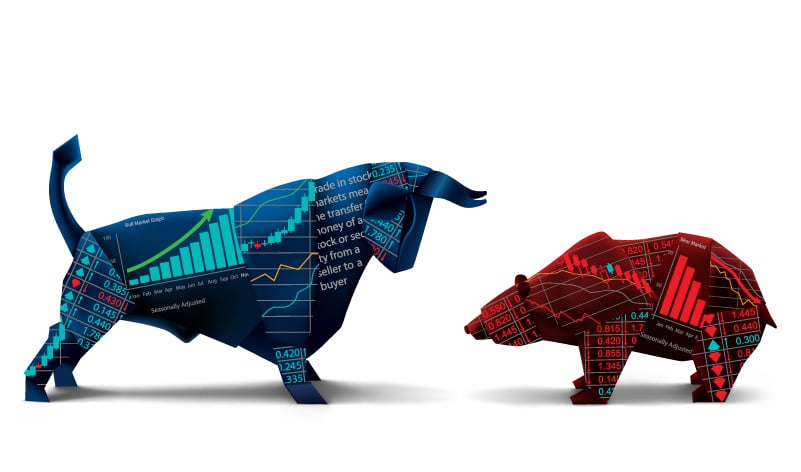October 4, 2025
Every successful investor knows a painful truth: knowing when to sell is often more critical than knowing what to buy.
While financial media overwhelmingly focuses on buying opportunities, our research consistently identifies companies facing significant headwinds that merit serious consideration for selling. These aren’t just stocks underperforming the market; they’re businesses confronting structural challenges, deteriorating fundamentals, or carrying valuations disconnected from financial reality.
What you won’t find here: reactionary calls based on short-term price movements or headline volatility. Each company on this list has been thoroughly analyzed across multiple metrics that historically precede substantial declines.
Smart investors understand that portfolio management requires both addition and subtraction. Sometimes the best investment decision is to redeploy capital away from troubling positions before problems fully materialize in the share price.
This week’s watchlist highlights stocks showing critical weaknesses that demand immediate attention:
Hims & Hers Health (HIMS)
Hims & Hers demonstrates how executive turmoil at critical junctures can signal deeper operational challenges, particularly when leadership transitions occur just months after appointment. The telehealth company’s stock plummeted 9% this week following the announcement that COO Nader Kabbani is stepping into an advisory role effective November 2, barely five months after joining from Amazon where he led the launch of Amazon Pharmacy. This marks the second COO transition in less than a year, with Kabbani’s predecessor Melissa Baird having moved to an advisory position in April.
The timing raises fundamental questions about Hims & Hers’ operational strategy during a pivotal period for the company. Kabbani joined specifically to scale operations as Hims & Hers expanded its weight loss drug offerings, a business line that has become increasingly complicated as supply shortages of GLP-1 medications have waned. The company’s tumultuous relationship with these products—including a short-lived partnership with Novo Nordisk that collapsed within two months—suggests operational challenges that may have contributed to the COO’s rapid departure.
At $52.63 with a $12 billion market capitalization, Hims & Hers trades at premium valuations that assume operational excellence and consistent execution. The installation of Mike Chi, the current chief commercial officer who has been with the company since 2021, as the new COO consolidates operations, marketing, product, and commercial functions under one leader—a restructuring that typically signals either strategic realignment or operational strain. While Chi brings internal continuity, the pattern of C-suite instability at a company still proving its business model sustainability creates uncertainty about management’s ability to navigate competitive pressures from established healthcare providers and evolving regulatory landscapes in telemedicine.
Roblox (RBLX)
Roblox faces a monetization crisis as bookings growth in its core U.S. market has decelerated sharply from recent peaks despite maintaining robust user engagement metrics. M Science analyst Corey Barrett’s analysis reveals that U.S. bookings growth likely slowed to the low-30% range year-over-year in September, down dramatically from mid-to-high 40% growth in August and exceeding 50% in July. This represents a concerning disconnect where daily active users continue growing healthily while the company’s ability to monetize those users through Robux sales is deteriorating.
The bookings slowdown is particularly alarming because it undermines Roblox’s core investment thesis centered on converting engagement into revenue. While the company maintains it can attribute some weakness to “rationalization of growth in more mature markets associated with back-to-school,” this explanation rings hollow given that seasonal patterns are well-understood and should be reflected in Wall Street expectations. Europe has experienced similar but less pronounced bookings deceleration, suggesting the problem extends beyond U.S.-specific dynamics.
At $122.89 with an $85 billion market capitalization, Roblox trades at extraordinary multiples that assume sustained high-growth monetization of its young user base. The company’s 26.30% gross margin leaves little room for error as it attempts to balance user experience with aggressive monetization strategies. With prominent investors including Cathie Wood reportedly exiting positions amid the bookings concerns, the stock faces a fundamental reassessment of whether engagement metrics can reliably translate to revenue growth. The disconnect between user growth and bookings suggests Roblox may be hitting natural limits on how much it can extract from its predominantly young demographic, threatening the growth trajectory that justifies current premium valuations.
DocuSign (DOCU)
DocuSign confronts an existential AI disruption as OpenAI’s launch of DocuGPT this week directly attacks the company’s core e-signature and agreement management business with advanced artificial intelligence capabilities. The stock plummeted 16% this week following OpenAI’s announcement of DocuGPT, an AI agent that converts contracts into structured, searchable data with claimed accuracy approaching 100%. Bloomberg Intelligence analysts immediately characterized DocuGPT as a “formidable competitor” in the agreement-management sector that represents DocuSign’s primary growth driver.
The competitive threat extends beyond simple feature parity—DocuGPT directly targets DocuSign’s Intelligent Agreement Management platform, the company’s planned next wave of growth. OpenAI’s offering includes obligation management, workflow automation, agreement preparation, AI-assisted review, and renewal management capabilities that mirror DocuSign’s own AI-enhanced features. The technology leverages OpenAI’s advanced large language models with zero-shot, few-shot, and one-shot learning capabilities, potentially providing superior document understanding compared to DocuSign’s more narrowly-trained systems.
At $69.63 with a $14 billion market capitalization, DocuSign trades on the assumption that its established customer relationships and 95% Fortune 500 penetration provide a durable moat against new entrants. However, this defensive positioning ignores the reality that AI disruption occurs faster than traditional competitive dynamics. While DocuSign can point to years of trust-building with clients handling sensitive legal documents, OpenAI enters with overwhelming brand recognition and technological superiority in AI capabilities. The company’s 20% stock-based compensation relative to sales further strains the investment case as it attempts to compete with a well-funded AI behemoth. For investors, the combination of direct competitive threat to both current business and future growth initiatives suggests this may be one of those rare inflection points where an established market leader faces genuine displacement risk.






